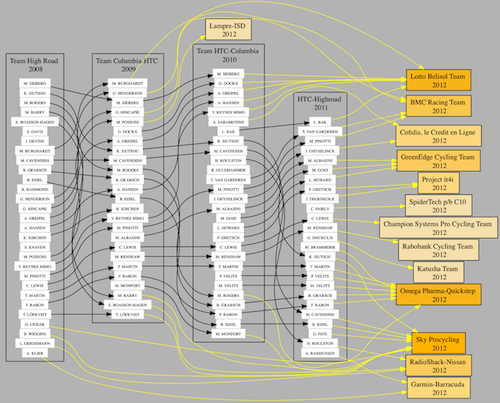Why has it been so crashy? Too many drugs, not enough drugs, cobbles, race radios, no race radios, the stages are too easy, the stages are too hard, power meters instead of bike handling, carbon bikes, carbon wheels - people present a long list of possible reasons.
But wait - ARE there more crashes this year than in in previous years? Let's look at the data.
First Analysis
I took a look at the number of Tour de France finishers versus the number of starters for the Tours from 1999 to 2013. Now, this just tells us how many people stayed in - not why riders didn't finish. There are a number of possible reasons in addition to crash injury. Foremost is missing the time cuts. Attrition is at best a rough estimate of crashing, but it's probably most useful in the first 10 days of racing - before the Tour usually sees major mountain days that are likely to cause riders to miss time cuts.In these 15 years, the average attrition rate is 20.3%. It is higher in the early part of the range. Figure 1 shows 1999 through 2013, and you can see that there are peaks and valleys but the overall trend is that of declining attrition.
You could generate some funky hypotheses from this, too - with more riders staying in the race, are the races faster and more aggressive?
Second Analysis
I took a look at the six most recent Tours, including the one in progress. In the chart below, the y-axis is the number of total abandons, and the x-axis is the stage. This chart shows us how many people drop out of the Tour as it progresses.The real outlier there is 2012, which saw 45 abandons for an attrition rate of 22.7%. But the others are all clustered in the 26 to 32 range: 2009 (26, 13.3%), 2010 (29, 14.1%), 2011 (32, 15.7%), and 2013 (29, 14.6%) all have attrition that is less than that 15-year average of 20.3%.
2014 is nestled solidly in the middle of the range. As of Stage 11, there have been 19 abandons for an attrition rate of 9.6%.
With the exception of 2010, each of these saw a pretty definitive uptick between 6 and 10 days into the race.
Conclusions
Except for 2012, recent Tours (2009-2014) have had less attrition than the 15-year average. The 2012 Tour de France had a higher than average attrition rate. Considering the fact that the recent 5 years have had a lower-than-average attrition rate, this makes 2012 seem even more unusual.However, this year's Tour is solidly average.
Limitations
Yes, attrition is only a rough approximation of crashiness. If you'd like to review all of the footage of the past 15 years of the Tour de France and manually count crashes, you are welcome to do so. It should only be a couple thousand hours of tape. Please put your results in the comments.Follow mattio on twitter at @_mattio







